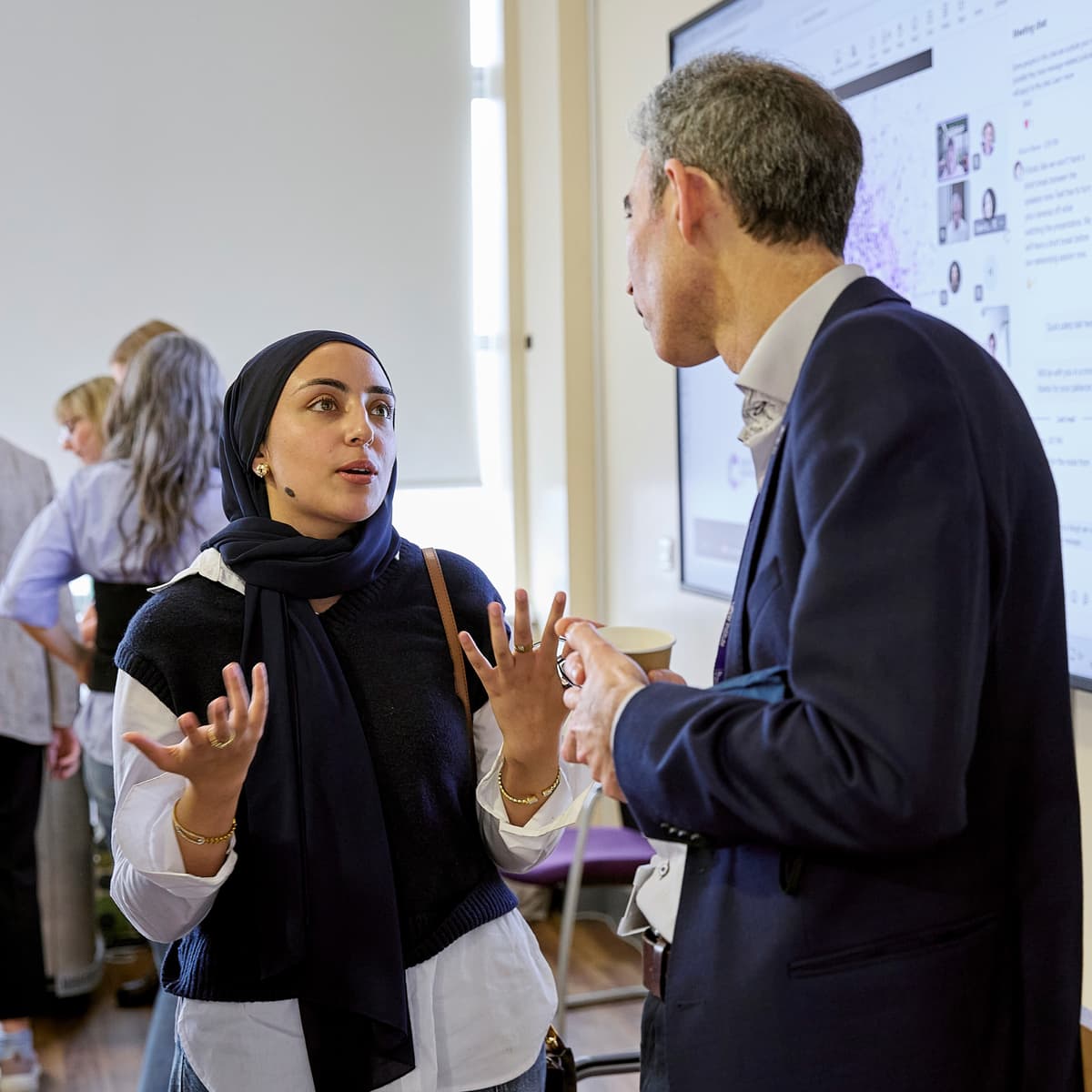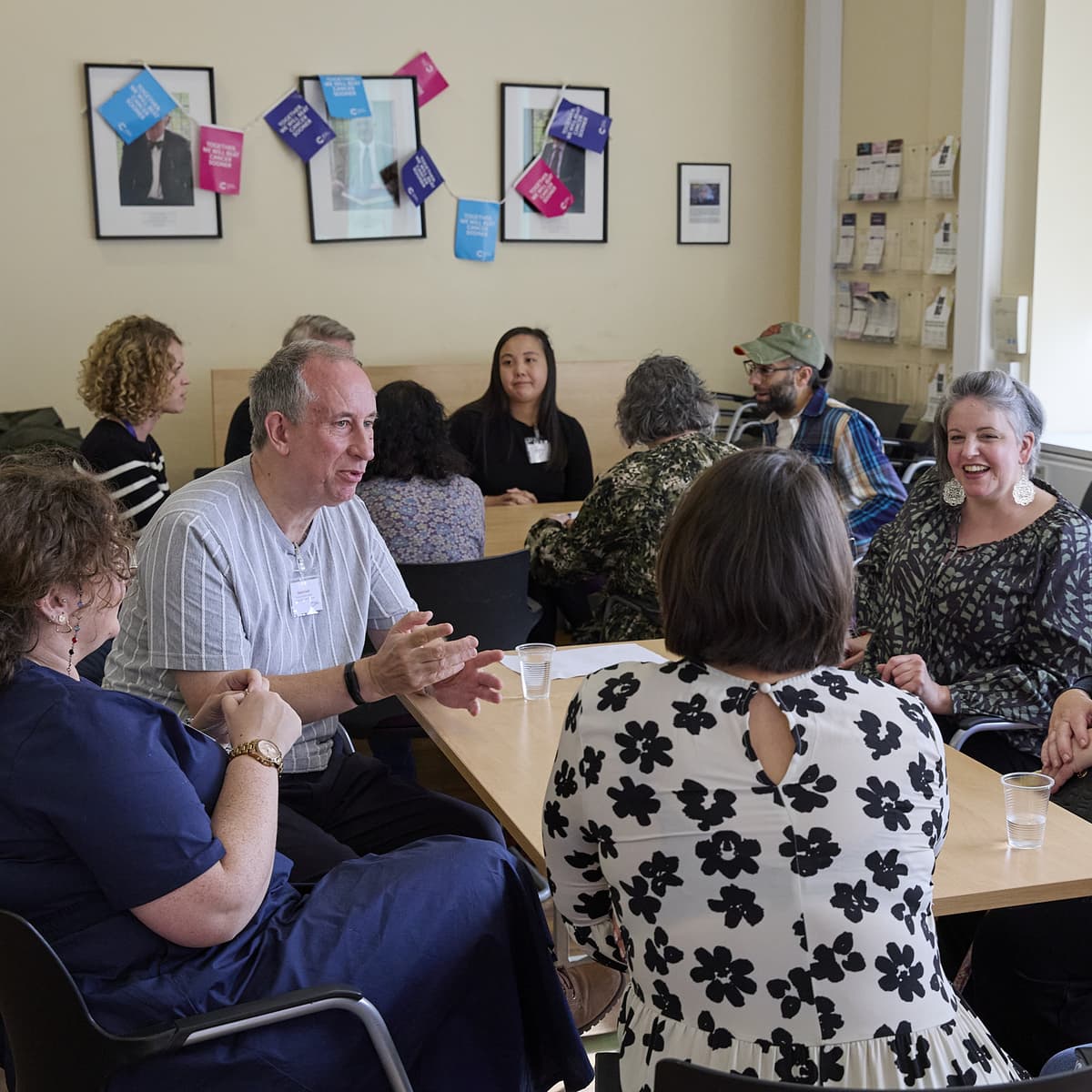
You can involve people affected by cancer at any stage of your research from the early planning stages through to sharing and evaluating your results.
The earlier you involve people in your research the more impactful it will be. Involving people affected by cancer and members of the public at this stage can help you pursue research that matters to them. It will also help identify any potential ethical implications or sensitivities.
Use surveys and/or focus groups to identify what the most important research topics are to them.
Work with them on an ongoing basis to keep impact and outcomes at the centre of your research.
Ask them to help you refine your research question and articulate the potential benefit for people affected by cancer and members of the public.
Working with PPI representatives when designing your research can strengthen its quality and improve study recruitment and retention.
Work with them on trial protocols to identify preventable barriers to recruitment and retention.
Ask them to review your patient-facing materials (eg informed consent documents or patient information sheets) to ensure these are easy to understand.
Ask for support to improve the communication of your research aims and patient benefits in your funding application, including writing a lay summary.
Working with PPI representatives to deliver your research can support trial participants and enhance study analysis. They can help with conducting a study and interpreting data.
Have them conduct interviews of trial participants to reduce researcher bias and help them feel more at ease.
Ask them to share insights from their lived experience of cancer to help make sense of qualitative, experiential information.
Send out patient experience surveys to understand the experience of trial participants and identify ways to improve your research activities.
Involving PPI representatives after your research is completed can help increase public interest and engagement.
Ask them to help identify the key messages of your research and summarising them in a lay friendly and engaging way.
Ask for support in tailoring communication to public audiences and/or in sharing results to those who participated in your research.
Have the develop and deliver public engagement and outreach plans. They can help make your research accessible and bring it to new groups and forums.
Being clear on your aims and objectives helps you communicate your goals with the people you involve. It will also help you when you’re applying for funding, evaluating your involvement and reporting on its impact.
Thinking about these questions can help you to define your aims and objectives for your patient involvement activity:
What problem are you trying to solve?
How can insight from people affected by cancer or members of the public help you solve this problem?
What questions do you need to ask them to gather this insight?
The personal experience of the people you involve may influence the involvement method you use.
Think about what experiences and skills will add the most value to your project to identify people relevant to your research. Personal experience such as having a personal diagnosis of cancer, being a carer or loved one, cancer type or treatment experience can all be useful things to consider.
The focus of your research and the questions you want to ask people will help you decide what skills are important for your project.
Remember that they are not supposed to be medical, scientific or research experts. They should primarily get involved based on their lived experience of cancer.

There are many methods you can use to gather insights from people affected by cancer and members of the public. Explore which methods might be best suited for your project.

You’ll need to budget for any costs associated with your involvement activity and be clear about what you’re able to cover before you recruit anyone.

How you recruit and induct the people you involve will depend on the goals of your activity and the involvement methods you choose.

There’s a lot involved in delivering your activity, including considering how to prepare for and run your activity, as well as how to facilitate active, impactful discussions.

Plan how you'll evaluate and communicate about your activity to ensure you can successfully measure your aims and objectives, improve involvement and demonstrate its impact.
It can be tempting to always involve the same people who are well known to your institute, organisation, or are personal contacts. PPI representatives who get involved regularly can become great experts. This can be very valuable for some involvement opportunities, but not all. It’s important that you involve people with the experiences and skills most relevant to your research, to get the most out of their involvement.
Involving people from a wide range of backgrounds can bring rich insights to your work. Look for where you can seek diverse views within the personal experiences and skills necessary for your research.

Writing in plain English or ‘lay’ can help your audience, people affected by cancer, members of the public, or professionals, understand your message exactly as you meant it.

We’ve put together advice, useful templates and case studies to help you when planning, delivering and evaluating your PPI activities.

Find out more about our commitments and expectations around involving people affected by cancer and members of the public in our work and in the research that we fund.